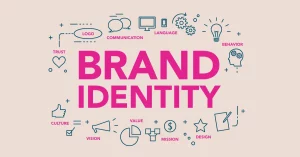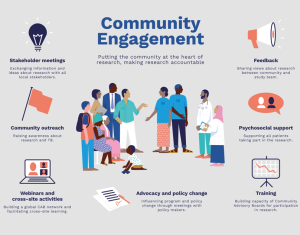Building a lifestyle brand around your passion isn’t just about the products you offer. It’s about creating a brand identity that reflects who you are, what you believe in, and the lifestyle you want to promote. When done right, your Lifestyle Brand will feel personal, authentic, and relatable to your target audience. Here are some more steps you can take to continue building your brand and making it successful in 2025.
Introduction
In today’s world, people are no longer just looking to buy products—they want to connect with brands that reflect their values and fit their lifestyle. This shift is creating new opportunities for creators and entrepreneurs to launch lifestyle brands that speak to specific audiences. Whether you want to inspire others, solve a problem, or simply share your passion, building a brand around your interests can be both fulfilling and profitable.
But with so many brands out there, standing out is more challenging than ever. A lifestyle brand strategy is key to creating something that resonates with your target audience. It’s about more than just selling products; it’s about crafting an experience that reflects who you are and the values you stand for.
This article will guide you through the steps of building a lifestyle brand around your passion, from identifying your niche to crafting your brand’s message and engaging with your audience on social media.
What Is a Lifestyle Brand?

A lifestyle brand is a brand that is built around the identity, values, and behaviors of its target audience. It’s more than just selling a product or service—it’s about creating a connection between your brand and your customers’ way of life. A lifestyle brand speaks to people’s emotions, aspirations, and values, making them feel like they belong to a community.
For example, brands like Nike, Apple, and Patagonia don’t just sell products; they promote a lifestyle. Nike, for instance, isn’t just about shoes—it’s about the mentality of pushing limits and striving for greatness. Patagonia, on the other hand, promotes environmental sustainability and outdoor adventures.
When you build a lifestyle brand, you focus on more than just your product or service. You create a narrative, values, and experiences that align with your audience’s lifestyle. The key to success is understanding your audience and positioning your brand to speak to their emotions, needs, and desires.
What Is This: How to Build a Lifestyle Brand Around Your Passion
Building a lifestyle brand around your passion in 2025 requires a mix of creativity, authenticity, and strategic planning. Here are some key steps you need to follow to turn your passion into a thriving lifestyle brand:
1. Identify Your Passion and Niche

The first step to creating a lifestyle brand is identifying your passion and the niche you want to serve. This is where everything starts. Whether you’re passionate about fitness, fashion, or food, your niche will determine the direction of your brand. It’s important to choose a niche that you are not only passionate about but also knowledgeable in, as it will help you connect with your audience more authentically.
Ask yourself: What do you love doing? What are you good at? Who do you want to help or inspire? Once you have clarity on your niche, it’s easier to create a brand that reflects your passion.
2. Define Your Brand Values and Mission
Next, define your brand’s values and mission. These are the principles that guide everything your brand does. Your values should reflect your passion and the impact you want to make on the world. A strong mission statement will guide your decisions, helping you stay true to your purpose.
Think about the problems you want to solve or the emotions you want to evoke. For instance, if your passion is sustainability, your brand values might include environmental responsibility, ethical production, and minimal waste. This will influence the way you design products, market your brand, and engage with your audience.
3. Create a Strong Brand Identity

Your brand identity is the visual and emotional representation of your brand. It’s what makes your brand stand out and be recognized. Your brand identity includes your logo, colors, typography, and imagery, as well as the tone and voice you use in your messaging.
When designing your brand’s identity, keep in mind the emotions you want to evoke in your audience. Your brand identity should speak to their lifestyle and aspirations. If you’re targeting fitness enthusiasts, your branding might be energetic and motivating. If your passion is sustainable living, your branding might have an earthy, calm feel.
4. Build a Compelling Online Presence

In 2025, a lifestyle brand needs a strong online presence to thrive. This includes having a user-friendly website, active social media accounts, and engaging content that speaks to your audience’s lifestyle. Building an online presence helps you establish credibility, engage with your audience, and share your message.
Focus on creating valuable content that aligns with your brand’s mission. Share blogs, videos, behind-the-scenes looks, and customer testimonials that reflect your brand’s values. Social media platforms like Instagram, Pinterest, and TikTok are great tools for lifestyle brands to showcase their products and build a community.
5. Engage with Your Audience

One of the most important aspects of building a lifestyle brand is creating a relationship with your audience. Engage with your community on social media by responding to comments, asking questions, and sharing user-generated content. By involving your audience in your brand’s journey, you create a sense of belonging that strengthens their connection to your brand.
You can also host events, live streams, or workshops to interact directly with your audience. This creates more personal connections and helps build brand loyalty. When people feel like they are a part of something bigger, they are more likely to become long-term customers and brand advocates.
6. Monetize Your Passion
Once your lifestyle brand is established and you have an engaged audience, it’s time to monetize your passion. You can start by offering products or services that align with your brand values. Whether it’s physical products, digital content, or subscription services, make sure your offerings are in line with your mission and resonate with your audience.
Don’t forget to explore partnerships with other brands or influencers that share your values. Collaborations can help you expand your reach and grow your business. Additionally, consider creating a blog or membership site to offer exclusive content or services to your audience.
7. Keep Evolving and Innovating

The most successful lifestyle brands continue to evolve with time. Keep up with trends in your industry, listen to customer feedback, and innovate to stay relevant. The digital world changes quickly, so adaptability is key to long-term success. Keep experimenting with new ideas, products, and ways to connect with your audience.
Stay Authentic to Your Passion

One of the most important aspects of building a lifestyle brand is staying true to your passion. When people connect with your brand, it’s because they feel like it’s genuine. If you try to promote something that doesn’t align with your values or interests, it will be harder to connect with your audience. Authenticity is key to creating a passion brand that feels real and trustworthy.
The best brands are those that reflect the true essence of their founders. Whether you’re passionate about fitness, travel, fashion, or food, make sure your brand is a true representation of what you love. If you stay authentic, your audience will appreciate it and feel more connected to your brand.
Create Engaging Content
Content is a powerful tool when it comes to building a lifestyle brand. You need to create content that not only showcases your product but also tells a story about your values, mission, and passions. Share your journey, challenges, and triumphs with your audience. This will make them feel like they are part of your brand’s story.
For example, if you are passionate about sustainable fashion, create content that educates your audience about eco-friendly fabrics, fashion trends, and how to live a more sustainable lifestyle. You can also share behind-the-scenes footage, customer stories, or tips that resonate with your brand’s mission. The key is to create content that is valuable and connects with your target audience on a deeper level.
Build Relationships with Influencers and Partners

Another great way to grow your lifestyle brand is by partnering with influencers or other brands that share your values. Influencers can help amplify your message to a broader audience and give you access to new potential customers. When choosing influencers to collaborate with, look for people who align with your brand’s mission and values. Their audience should match your target audience, so the partnership feels natural and authentic.
You can also consider partnering with other brands that share a similar mission. These collaborations can help you reach new customers and build credibility within your industry. For example, if you have a wellness brand, you might collaborate with a fitness brand or a healthy food company. These partnerships can create a mutually beneficial relationship that helps both brands grow.
Offer More Than Just Products
A lifestyle brand is not just about selling products or services. It’s about creating an experience that your audience can connect with. Whether it’s through events, online communities, or exclusive content, offering experiences adds value to your brand. These experiences make your brand feel more than just a business; it becomes a lifestyle that people want to be part of.
For example, if your passion brand is focused on travel, you can create a community where people share travel tips, stories, and photos. You can also organize trips or meetups that allow your customers to connect with others who share their love for travel. This helps build a stronger emotional connection with your audience and turns your brand into a movement.
Measure Your Success and Stay Flexible

As you build your lifestyle brand, it’s important to track your progress and see what’s working. Use analytics tools to measure website traffic, social media engagement, and sales. Look for patterns in the data that show what resonates with your audience. For example, are certain types of posts getting more likes or shares? Are some products selling better than others? This information will help you make smarter decisions as you continue to grow your brand.
It’s also important to stay flexible. As your brand grows, your audience and goals may shift. Be open to making changes and trying new things. The digital world is always changing, and the most successful brands are those that adapt to new trends and feedback. Don’t be afraid to experiment with new ideas and strategies to keep your brand fresh and exciting.
Keep Your Brand Community Engaged

Your brand is not just about the product you sell; it’s about the community you build around it. Engaging with your customers and followers is crucial for long-term success. Keep your community active and involved by encouraging discussions, hosting Q&A sessions, and asking for feedback.
Create a sense of belonging by offering loyalty programs, exclusive discounts, or giveaways. People love feeling like they are part of something special, and by creating a strong, engaged community, you will build customer loyalty. When your audience feels valued, they will continue to support your lifestyle brand and spread the word to others.
A Comparison Table: Traditional Brand vs. Lifestyle Brand
| Aspect | Traditional Brand | Lifestyle Brand |
|---|---|---|
| Focus | Selling products or services | Building a community and promoting values |
| Audience | General target market | Specific lifestyle or values-based community |
| Brand Message | Focused on the product | Focused on the lifestyle, emotions, and aspirations |
| Engagement | Limited interaction with customers | Strong relationship and community involvement |
| Brand Loyalty | Driven by product quality and price | Driven by shared values, experiences, and connection |
This table clearly shows the difference between a traditional brand and a lifestyle brand. While a traditional brand focuses on selling products, a lifestyle brand focuses on building a deeper connection with the audience.
Conclusion
Building a lifestyle brand around your passion in 2025 is not only possible, but it’s a great way to turn your dreams into a Successful Business. By staying authentic, creating engaging content, building relationships, and offering more than just products, you can create a brand that resonates with your audience and helps you stand out in the marketplace.
A passion brand that reflects your values and lifestyle will attract customers who feel a genuine connection to what you offer. Keep evolving, stay engaged with your community, and be open to new opportunities. With the right strategy, you can build a lifestyle brand that lasts and grows for years to come.












